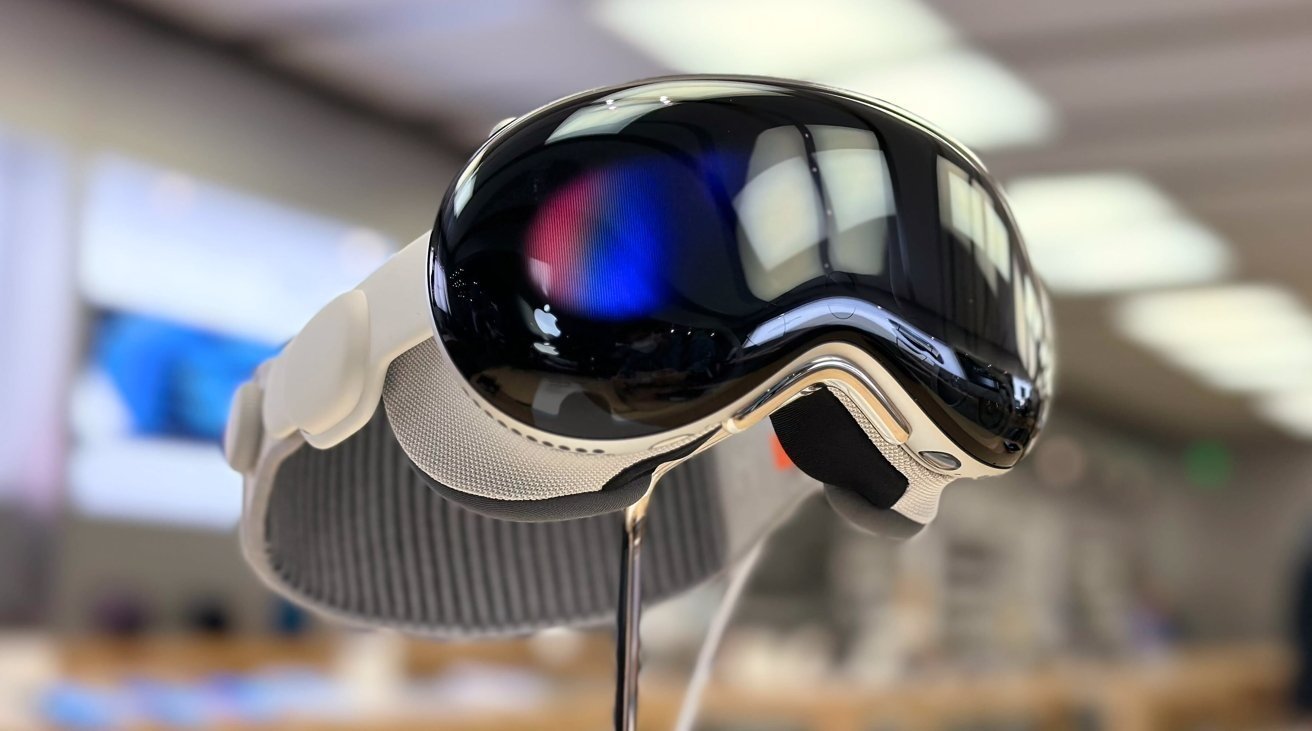Apple Vision Pro is unsurprisingly expensive to produce
The Apple Vision Pro is a costly item for Apple to manufacture, with nearly half of its $3,499 price tag covering its expensive components.

Apple Vision Pro
Compared to other headsets on the market, the Apple Vision Pro offers high performance and ships with an equally high price tag. While eye-watering to consumers, the $3,499 Apple charges is high, but Apple does have to pay component suppliers a considerable slice of the pie.
An estimate of the so-called "bill of materials" for the Apple Vision Pro by researchers at Omdia, shared with CNBC, prices the components at around $1,542 per headset. This accounts for approximately 44% of the price of the headset.
This figure only covers the manufacture of each headset, and doesn't take into account other costs Apple may incur, such as recouping research and development budgets, or marketing the headset to the public.
At over $1,500, the bill of materials is also higher than the retail cost of many current headsets, including the Meta Quest Pro at $999, or $1,499 at launch.
Omdia reckons the most expensive element of the headset are the two micro OLED displays, sourced from Sony, which cost $228 per display. At around 3,380 pixels per inch, the displays are arguably the most important parts, providing the high resolution and picture quality Apple needed for the product.
The displays are also more expensive than the chipsets used to power the experience. In second place, the chipset includes the M2 chip as well as the custom sensor-managing R1 chip.
The thoroughly high cost to produce each headset does make sense for Apple despite the prospect of minimal profit for the first-generation device. With refreshed models expected in the future, as well as refinements in component production and the benefit of economies of scale, Apple will eventually be able to reduce the per-device cost of the hardware.
It probably won't earn much of a profit from the initial Apple Vision Pro, but Apple stands a good chance of doing so with later models.
Read on AppleInsider

Comments
/edit. No getting around those $$$ displays though. It will always be expensive to be on the bleeding edge there. Perhaps AppleWatch will be the first with MicroLED displays, but VP will likely be second.
In 1984, the Macintosh made its debut for $2,495. Later that year, the Macintosh was upgrade with a decent amount of RAM. Cost? $3195 initially, because RAM was expensive in those days. The Mac 128K dropped to $2,195, but is that really an AliExpress drop? LOL. No. What about the Mac 512Ke? Oh look! A price drop! Now only $1,999. That's sure to please the AliExpress price lovers! Oh wait... The 512Ke came out in 1986 when the Mac Plus also came out, selling for $2,600 -- more than the original 128K Mac. How about the Mac SE in 1987? Nope. $2,898, unless you wanted a 20MB hard disk, and then $3,698. (Admittedly, the Mac Plus still sold during the SE years.) Surely the 1989 compact Macs must have been cheaper, you say? Nope. The SE/30 came out for $4,369 for a mere 1MB of RAM and no hard disk, rising to $6,569 for 4MB of RAM and an 80MB HDD.
I could go on, but you get the picture.
When newer models include even better, cutting edge tech inside as compared with the original model, the price doesn't go down. Traditionally, it has gotten more expensive. And certainly, inflationary pressures will drive that too. And while older models like the Mac Plus continued to be sold alongside better and more expensive models like the SE, the Plus was never AliExpress cheap.
Even if you argue that the cost of the current cutting edge tech will go down over time, and even if you argue that increased sales volumes will drive the price down as compared to now, I simply don't see VISION PRO becoming a $500 product that competes with META. Strip out all the expensive features that make VISION PRO unique and better, sure. But Apple would be stupid to do that.
So let's get our expectations adjusted in accordance with reality, folks.
They will figure out how to cut a few corners, optimize what's selling and benefit from price drops and put out a VP (SE?) with a similar experience to the VP 1 for $2499.
That's according to my cracked crystal ball...
All of these things take time to develop and may not come to fruition for a few releases down the road. It's not like flipping a switch. To make any of this possible Apple needs to focus on doing everything they can to sustain and grow the demand for the products in the mix. I'm kind of surprised at the level of scrutiny that's being applied to a product that is still taking its first few baby steps. It still has to reach the running stage before we try to project too far on its future success at the levels of minutia that some people are pretending to be privy to. Only Apple has anything approaching a real road map, and they're going to adapt, tweak, and fine tune that map as needed to react to both hard and soft data and feedback coming in from their customer base, customer support crews, industry experts, and trusted partners.